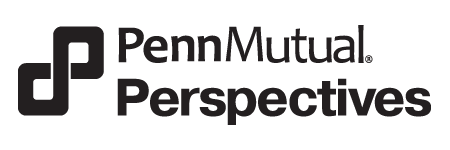Exploring the Future of Life Insurance at Google
I recently attended a gathering of insurance industry executives at Google’s headquarters in Mountain View, California. The 20 attendees represented a broad cross-section of the insurance industry — Property & Casualty (P&C), Life, Health, and Reinsurance. There was a broad consensus among us that the world is changing and the insurance industry needs to change with it.
It was instructive that the meeting was being held at Google, because Silicon Valley has a very different attitude to innovation. Some might say that the insurance industry has been slow to change: Everything must be in place before a change can be launched. The “lean startup” philosophy of Silicon Valley, however, is centered around the concept of a minimum viable product, or MVP, where the goal is to get a prototype product into customers’ hands as quickly as possible to learn how the market will react to the product. Customer feedback from the use of the prototypes guides the next iteration of the product design. Failure is just a part of the learning experience—in other words, a “fail forward” approach.
It strikes me that if the insurance industry wants to accelerate change, it needs to adopt a similar “minimal viable experience” mindset and begin prototyping and launching new innovations much more quickly.
I absolutely believe the insurance business is ripe to be disrupted, though it remains to be seen whether the disruption will be led by traditional insurance companies or by someone from the outside. The day after the meeting at Google, we went to the offices of venture capital firm Andreessen Horowitz to meet with some of its portfolio companies focused on the insurance industry. Whether or not it was a firm focusing on disintermediating the claims process in the P&C world through the use of drones, or a new app intended to transform the client experience, there is a tremendous amount of investment taking place in “Insurtech” already. Fintech’s ahead of Insurtech — it’s certainly got bigger mindshare — but I think Insurtech will begin to catch up fairly rapidly.
We’ve been taking the idea of fast-cycle innovation to heart at Penn Mutual. We have, for example, borrowed a concept from agile software development and increased our use of smaller teams on short sprints, empowered with clear goals. It’s not just a matter of cutting through bureaucracy, but also making clear investments with defined outcomes.
Accelerating the client experience is our number one corporate initiative, rethinking how a client engages with Penn Mutual, from application to servicing. We want to create a completely electronic experience for clients that greatly reduces the time needed to get a policy in force.
Long term, I could see using technologies such as big data and advanced analytics to help make underwriting decisions, eliminating the time-consuming and inconvenient process of conducting a medical exam and collecting all the relevant medical records. Using electronic records from the prescription drug data bases and motor vehicle reports, combined with broad-based information around financial characteristics might give a much faster and reasonably accurate risk evaluation than waiting weeks for paper-based health medical records. Over time, medical records are going to become increasingly available electronically, and that will allow for even quicker and more accurate underwriting, but today medical records are a huge bottleneck in writing new policies.
Today it might take between two and four weeks to get a life insurance policy. I see no reason why, within the next two years, that it can’t be done in less than a week, and, looking further out, I think a large amount of life insurance is going to be written within a day or even less.
Let me finish by summarizing the five things I learned while at Google:
- The pace of change is only going to accelerate.
- Significant investment is being made to transform all aspects of the insurance business, from products to underwriting to servicing.
- The ability to leverage big data and social media has the potential to transform how companies engage and underwrite prospective clients.
- The insurance industry has to adopt a bias for action, using the concept of minimum viable experience, MVE, to launch more quickly and then rapidly iterate.
- Cyber risk continues to be a major area of concern and focus where, as an industry, we need to make sure that we continue to protect the organization and our customers’ data.
This post is for informational purposes only and should not be considered as specific financial, legal or tax advice. Depending on your individual circumstances, the strategies discussed in this post may not be appropriate for your client’s situation. All opinions expressed in this post are solely those of the author and do not necessarily reflect the opinions of Penn Mutual, its affiliates or employees. The information in this material is not intended as tax or legal advice. Always consult your legal or tax professionals for specific information regarding your individual situation.
3185251CC_AUG22






